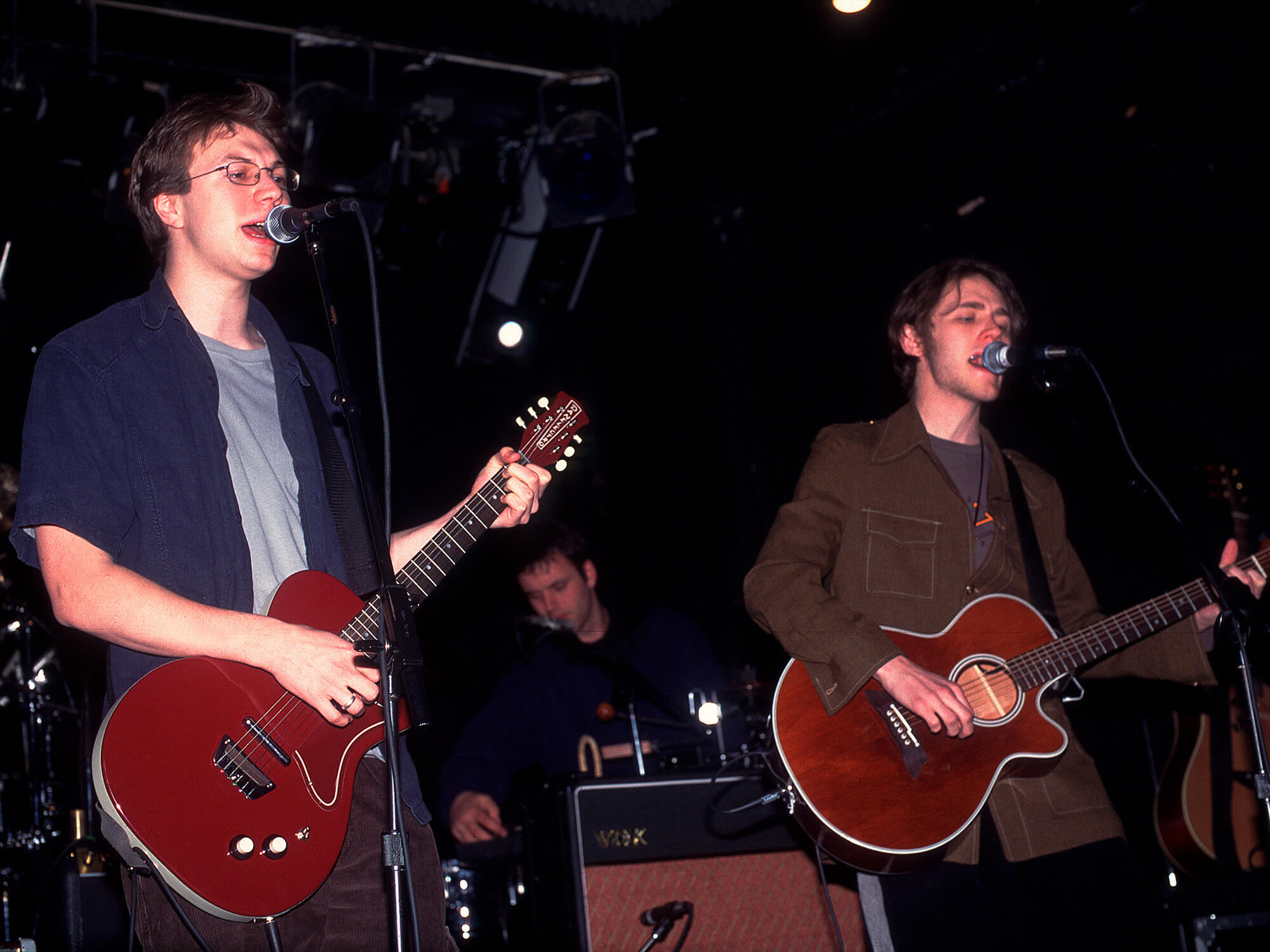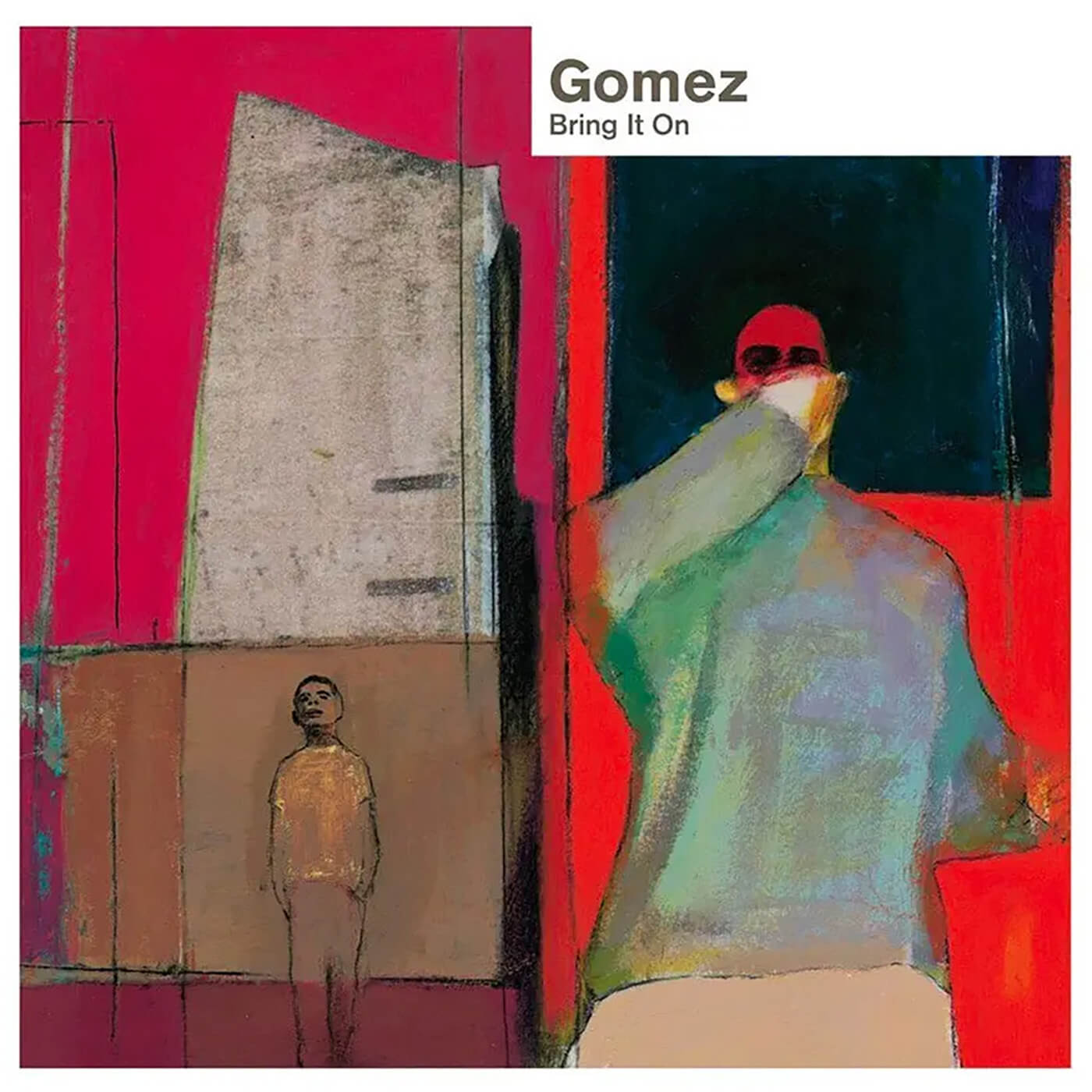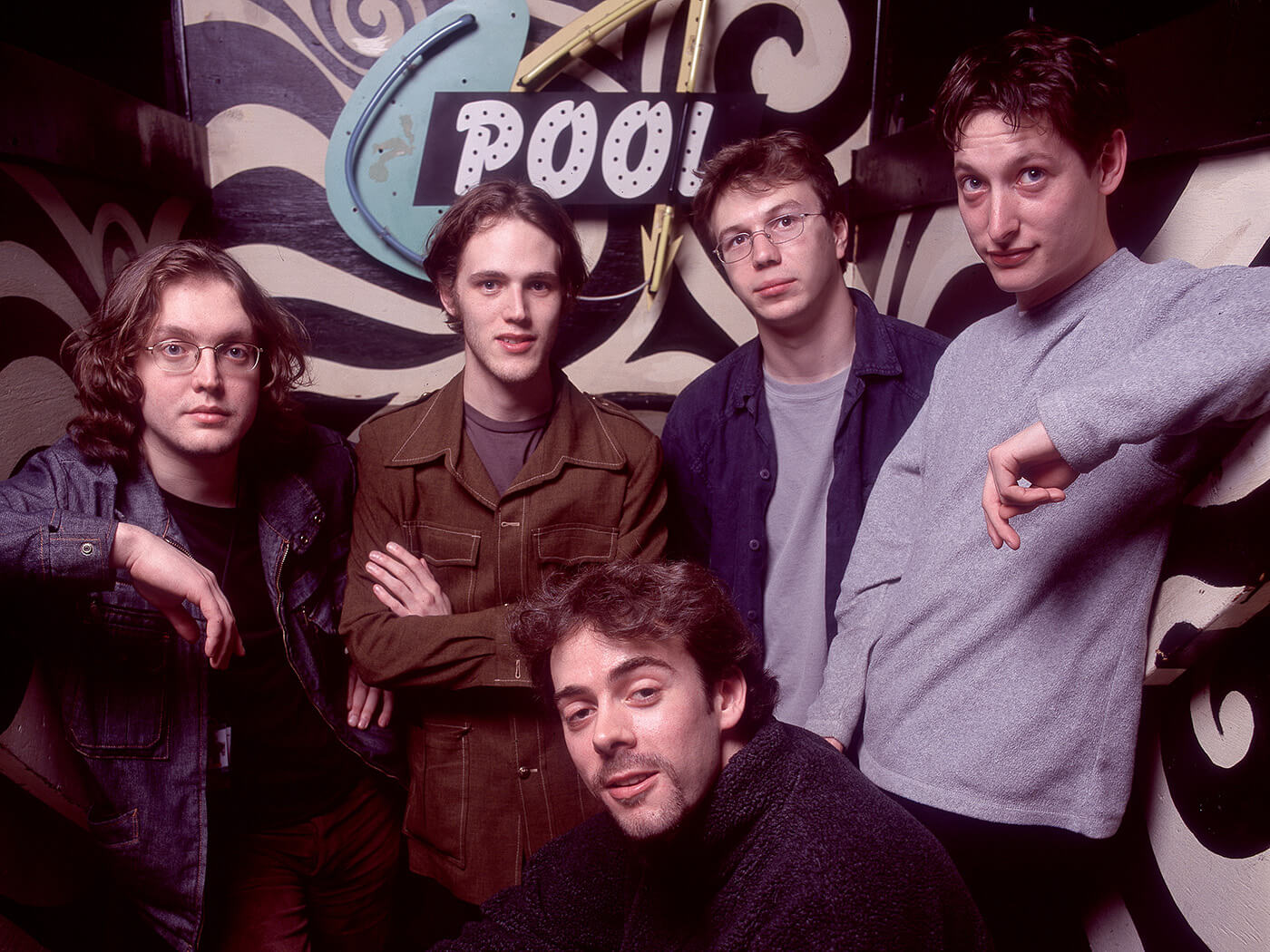The Genius Of… Bring It On by Gomez
A home-recorded fusion of blues, Latin ballads and lo-fi electronica, Bring It On boosted the appeal of acoustic guitars and landed Gomez the Mercury Music Prize.

Image: Paul Natikin / Getty Images
Released into the barren Britpop aftermath in the spring of 1998, Bring It On offered a more nuanced, charming and somehow timeless antidote. It would propel its creators to rapid success and play no small part in making the acoustic guitar cool again.
- READ MORE: The Genius Of… The Blue Album by Weezer
A debut album recorded by five northern lads in a garage with modest guitars and a four-track, it was certified Platinum and landed Gomez the Mercury Music Prize.
Fusing swampy blues jams with Latin-flavoured ballads, cosmic funk and lo-fi electronica, Bring It On was refreshingly free of the era’s prevailing bawdy bluster and cocaine-fuelled indulgence as British guitar music entered a fug in the late 90s.
Gomez’s three guitarist-vocalists, Ian Ball, Ben Ottewell and Tom Gray, switched instruments and vocal takes effortlessly, conjuring an intoxicating sound that could have emerged at any time in the previous 30 years. Ball self-effacingly described this loose improvised melange as “confused lurching”.
The lurching immediately struck a chord with the band’s audience. If Gomez looked like a bunch of stoned recently graduated students riffing on their Captain Beefheart, JJ Cale and Grateful Dead albums, well that’s because they were.
“We were just kids mucking around with tape machines,” Gray told NME. “We would just nip off, go and record some music, come back and carry on the party.”
Within a year of putting together the home-spun demo that’s the core of Bring It On, Gomez had beaten The Verve’s Urban Hymns, This Is Hardcore by Pulp and Massive Attack’s Mezzanine to the Mercury Prize. They’d also played Glastonbury’s main stage and had most of a second album in the can. And they looked as if they weren’t even trying.
Lowden proud
While they were voracious crate diggers mining musical history for inspiration, Gomez were anything but vintage guitar aficionados. When asked in one guitar magazine interview what their most important item of gear was, Ball quipped nonchalantly “marijuana”.
Largely the rhythm man on Bring It On, Ball played a ‘72 reissue Thinline Telecaster and a Lowden acoustic. His memorable, loping alternate-picked A♭/C♭/D♭ progression on the infectious Whippin’ Picadilly was written with Chuck Berry in mind and paired with a keyboard sample shot through an Electro-Harmonix Small Stone phaser.
Bring It On’s lead single recalls a lysergic 1995 pilgrimage to a Beck gig at Manchester Academy – he’s the character who flickers briefly into view “dressed in a suit, looking like a lunatic”. The song’s wistful conclusion that “there’s not enough hours in our life” epitomises the youthful romanticism at the heart of Bring It On.
Ball’s keen ear for a breezy pop melody was contrasted by Ottewell’s weathered growl. Channelling Tom Waits, Eddie Vedder and any number of Delta bluesmen, GQ described the 20-year-old’s voice as “not of this world”. Ottewell also plays a Lowden on Bring It On, alongside a Fat Tele with a bridge humbucker, a Danelectro 56-U2 and a National Resolectric resonator.
It’s his electrifying slide work you hear at the start of the sprawling Rie’s Wagon, and his devilish steel-stringed acoustic riff that pirouettes through the waves of tremolo and jazzy snare work on 78 Stone Wobble. Meanwhile, the felicitous little cycling electric pattern in the coda of Free To Run is an absolute delight.
Ottewell demonstrates his astonishing vocal power and tenderness on the album’s most beatific moment, Tijuana Lady, flirting heavily with stereotypical pastiche. A Mariachi guitar intro gives way to smokey evocations of “sombreros” and “silky ponchos” down in “old Meh-ico”. Complete with a sparkling four-bar Spanish guitar solo, it sounded not like a parody but instead devastatingly gorgeous. You could almost hear Gomez sniggering behind their hands.

Pyramid songs
With the album released in April 1998, a pair of live performances were instrumental in its vertiginous success.
The first was on Later… with Jools Holland on 8 May, joining a bill that included Page and Plant, Nick Cave & The Bad Seeds and Natalie Imbruglia (it was the 90s). The churning synth riff and ghostly wail of Ball’s EBow on the album’s opening track Get Miles set the stage for Ottewell’s soul-stirring roar of “I love this island, but this island’s killing me” to fire Gomez into the nation’s living rooms.
A month later as the Somerset rain lashed down, they were gracing Glastonbury’s hallowed Pyramid Stage, cloaked in Pac a Macs and looking as if they’d been playing to 40,000 people their whole lives.
As student flats and house parties began to resonate to the sound of Bring It On, lava lamps bubbling away and the scent of nag champa filling the air, Gomez toured relentlessly and positive album reviews rolled in. NME lauded Bring It On as “one of the most assured, poised, hilarious, out-there, plain don’t-give-a-fuck enjoyable debut albums in living memory”.
In Colin Larkin’s essential Top 1,000 Albums tome, the record is nestled between the Grateful Dead and Elton John at No. 372, while it missed out a place in the top 10 of the UK album chart by a whisker.

America’s most wanted
Not everyone bought into Gomez’s blues revivalism and tales of druggy misadventure, though. Rolling Stone’s Neva Chonin claimed Gomez were masters of “sonic mimicry” at the expense of a coherent identity.
While a second album, Liquid Skin, followed a year later, the band’s popularity began to wane in the UK. By 2004, Gomez had moved to America, disillusioned with a fickle audience at home who’d been seduced by a garage-rock revolution led by The Strokes, White Stripes and Libertines. ”It was a case of, ‘If you don’t want us, we won’t stick around. We’ll just fuck off’’,” recalled Gray.
However, Bring It On deserves to be celebrated as a seminal British album. As The Guardian’s Alexis Petridis neatly summed up, it’s “a reaction to gloss and bombast involving a stoned melding of rootsy music with lo-fi electronics”.
Beyond that, the album’s influence on other bands is undoubted. It inspired, for one, The Beta Band to get weird on their exceptional Three EP’s, while BBC 6 Music listeners recently voted Bring It On the greatest ever winner of the Mercury Prize.
At the last count, the album had sold more than half a million copies and been treated to an expanded 20th anniversary boxset reissue, with accompanying tour. Not bad for a bunch of four-track demos recorded in a garage.

Standout guitar moment
Free To Run
For more reviews, click here.
